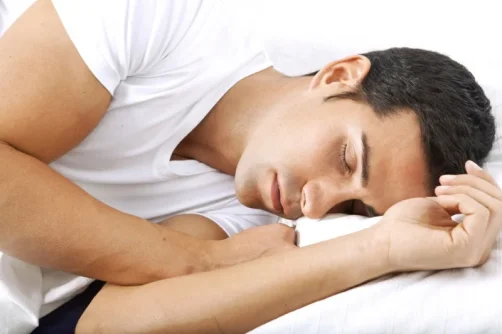Nelson Vergel
Founder, ExcelMale.com

"Plasma testosterone levels display circadian variation, peaking during sleep, and reaching a nadir in the late afternoon, with a superimposed ultradian rhythm with pulses every 90 min reflecting the underlying rhythm of pulsatile luteinizing hormone (LH) secretion. The increase in testosterone is sleep, rather than circadian rhythm, dependent and requires at least 3 h of sleep with a normal architecture. Various disorders of sleep including abnormalities of sleep quality, duration, circadian rhythm disruption, and sleep-disordered breathing may result in a reduction in testosterone levels. The evidence, to support a direct effect of sleep restriction or circadian rhythm disruption on testosterone independent of an effect on sex hormone binding globulin (SHBG), or the presence of comorbid conditions, is equivocal and on balance seems tenuous. Obstructive sleep apnea (OSA) appears to have no direct effect on testosterone, after adjusting for age and obesity. However, a possible indirect causal process may exist mediated by the effect of OSA on obesity. Treatment of moderate to severe OSA with continuous positive airway pressure (CPAP) does not reliably increase testosterone levels in most studies. In contrast, a reduction in weight does so predictably and linearly in proportion to the amount of weight lost. Apart from a very transient deleterious effect, testosterone treatment does not adversely affect OSA. The data on the effect of sleep quality on testosterone may depend on whether testosterone is given as replacement, in supratherapeutic doses, or in the context abuse. Experimental data suggest that testosterone may modulate individual vulnerability to subjective symptoms of sleep restriction. Low testosterone may affect overall sleep quality which is improved by replacement doses. Large doses of exogenous testosterone and anabolic/androgenic steroid abuse are associated with abnormalities of sleep duration and architecture."
Source












